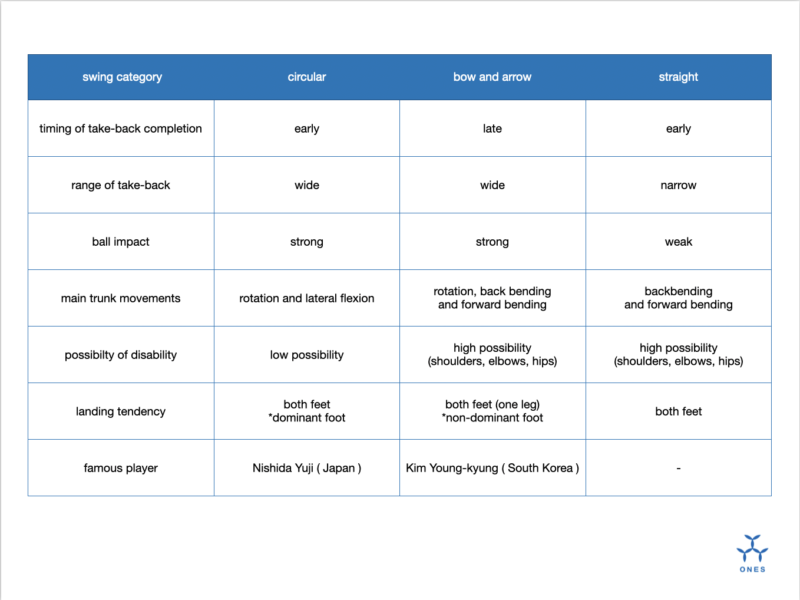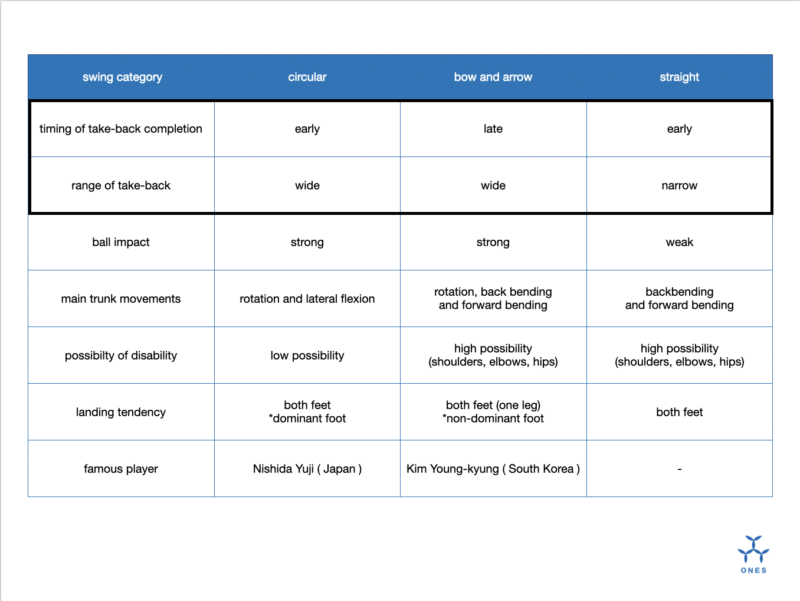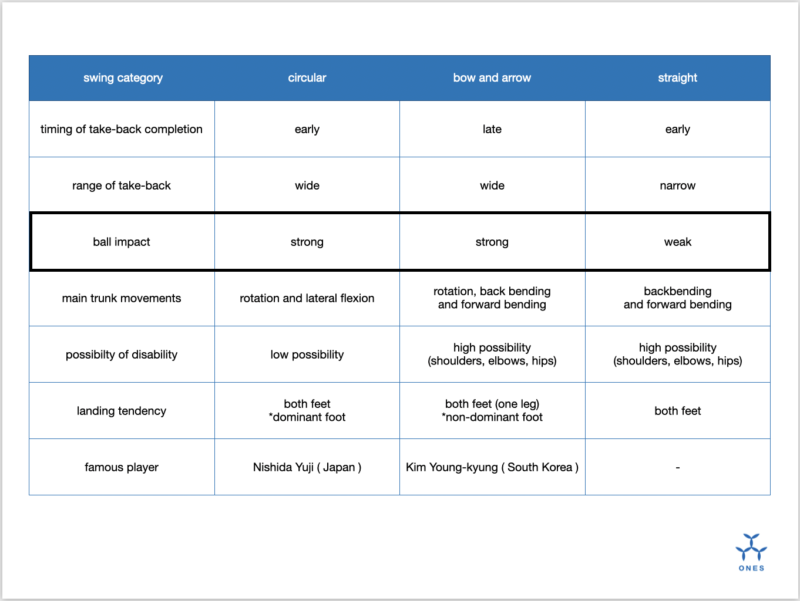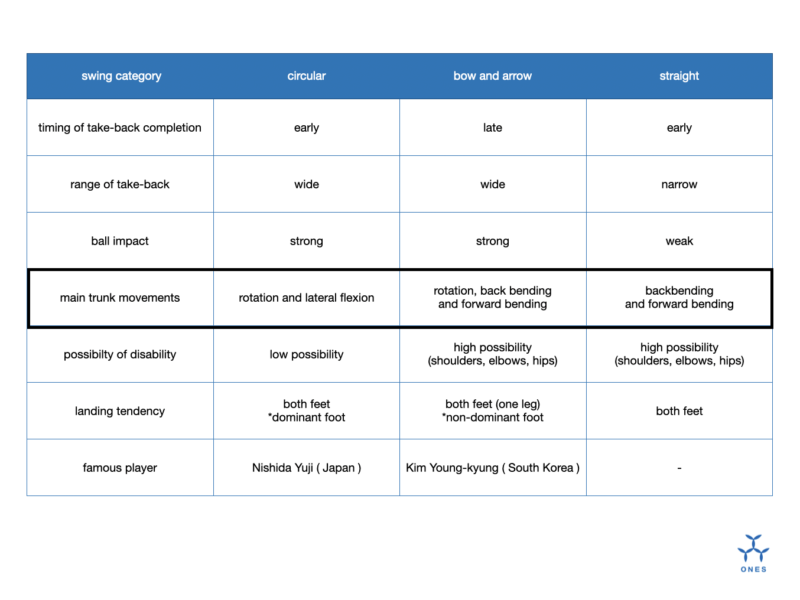In this article, I would like to discuss each spike swing action in more detail by looking at the comparison table. First, please take a quick look at the table below. Let’s compare and contrast each swing relatively from several perspectives.

Timing of take-back completion / range of take-back

It is no exaggeration to say that the ability to hit a powerful spike depends on the take-back. The take-back is a preparatory movement in which the dominant arm is pulled backwards to complete a state in which the arm can swing firmly (in reality, the ideal state is for the arm to swing with the movement of the torso). Circulars and straights are superior in terms of their speed of completion.
Circular (timing: early / range: wide)
The forearm raising action during the jump in circulars is characterised by both arms being raised upwards until below the shoulders, at which point the dominant and non-dominant arms diverge. The non-dominant hand continues to swing up, while the dominant hand quickly moves into the take-back movement. Therefore, the take-back is completed earlier. In addition, as the swing mainly uses the rotational movement of the trunk, the take-back movement naturally increases accordingly.
Bow and arrow (timing: late / range: wide)
In the bow-and-arrow, the forearms are raised to a high position with both arms above the shoulders. The non-dominant and dominant arms finally diverge when they reach the top. The dominant hand then begins the take-back movement, as if drawing a bow and arrow, as the name implies. Thus, the start of the take-back movement is slowed down and the completion of the take-back is delayed. In addition, as the swing uses a rotational movement of the trunk, the take-back action naturally increases accordingly. However, in cases where the approach to a set ball is delayed, it is possible that the take-back action cannot be completed and the take-back becomes smaller.
Straight (timing: early / range: narrow)
As with the bow and arrow, the forearm swing movement during the jump is towards a higher position with both arms aligned above the shoulders, so at this point there is a delay in completing the take-back movement compared to the circular. However, the timing of the final completion of the take-back action is earlier, as the trunk rotation movement hardly occurs and the take-back itself is smaller.

The more powerful the spike, the stronger the impact on the ball, the higher the scoring ability will naturally be. Therefore, the ball impact perspective is very important when considering the spike swing.
From the perspective of the spike swing, it is fair to say that the ball impact is proportional to the range of the take-back. Therefore, the following can be seen.
Circular (impact: strong)
Bow and arrow (impact: strong)
Straight (impact: weak)
Main trunk movements

There are also characteristics of the trunk movements that are mainly used by the swing. We will look at each of these in detail.
Circular (trunk movements: rotation and lateral flexion)
The main trunk movements of the circler are rotation and lateral flexion. These two movements are not separate movements, but rather a chain of movements that occur in sequence with each other. It may also be a little rough to say, but it can be said that the rotation movement accelerates the swing and the lateral bending movement raises the hitting position.
Bow and arrow (trunk movements: rotation, forward bending and backward bending)
The main trunk movements of the bow and arrow are rotation, forward bending and backward bending. Similar to the Circular, rotation movements occur, but lateral bending movements are less likely to occur. This is because it is affected by the bow-and-arrow’s characteristic bow-and-arrow take-back motion. In this movement, the elbow of the dominant arm is pulled relatively high (above the shoulder), and as a result, lateral bending movements are less likely to occur. In addition, the higher the dominant elbow is pulled (above the shoulder), the more the rotational movement is inhibited, making it difficult to generate power. In these situations, backward-bending to forward-bending trunk movements tend to predominate in an attempt to add power.
Straight (trunk movements: forward and backward bending)
The main trunk movements in the straight are forward and backward bending. Almost no rotational movements occur as in the above two swings. Also, no lateral bending movement occurs. Therefore, the trunk movements that can be used to accelerate the swing are limited to backbending to forward bending movements.
We will continue with an explanation of the characteristics of each of the spike swings.




